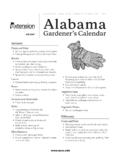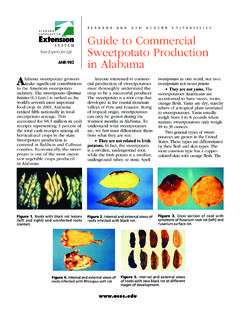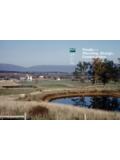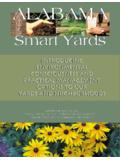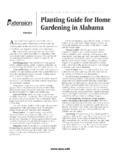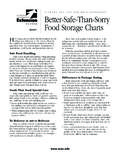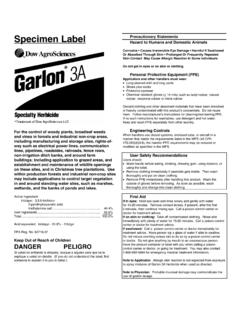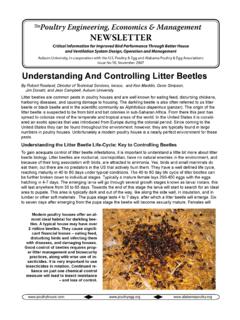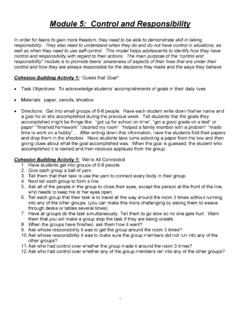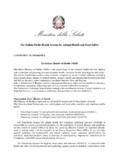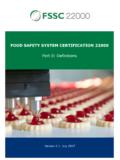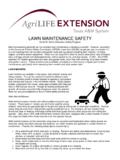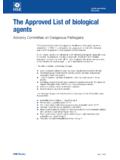Transcription of ALABAMA A&M AND AUBURN UNIVERSITIES Feeding …
1 A L A B A M A A & M A N D A U B U R N U N I V E R S I T I E S. Feeding Broiler ANR-557. Litter to Beef Cattle C attle and other ruminants have a unique diges- tive system that allows them to use waste and other types of by-products as sources of dietary nu- It is important that the beef industry avoid a controversy over the healthfulness of beef. Broiler litter has been used as feed for several years in all trients. The cattle- Feeding industry has been built areas of the country without any recorded harmful largely on the use of by-products and other materi- effects on humans who have consumed the prod- als that can be digested only by ruminants. One by- ucts of these animals. In addition, in ALABAMA , litter product that can be used as a cattle feed is broiler is most commonly fed to brood cows and stocker litter.
2 Cattle that are not usually marketed as slaughter The broiler chicken industry has long consid- beef. Very little if any litter is in the diets of fin- ered broiler litter a problem by-product. It has been ished cattle fed for slaughter (although, allowing a used mainly as a fertilizer. However, fertilizer does 15-day withdrawal period from Feeding litter before not make the most efficient use of broiler litter. In slaughter, such a diet would be considered safe). terms of the cost of replacing the nutrients it pro- So, the possibility of any human health hazard, ei- vides with nutrients from other sources, broiler lit- ther real or imagined, is remote. ter is worth four times more as a cattle feed ingre- In sum, the use of broiler litter as a cattle feed dient than as fertilizer. Litter is a good source of offers three primary advantages: protein, energy, and minerals, especially for brood 1.
3 It is an environmentally responsible use of a cows and stocker cattle, which are the backbone of problem by-product. the cattle industry in the state. In addition to offer- 2. It provides an incentive for the proper man- ing an economic advantage, using broiler litter in agement of this by-product by poultry and cattle feed also helps to conserve plant nutrients. These producers alike. nutrients, nitrogen, phosphorus, potassium, and 3. It economizes the production of beef cattle. other mineral elements, are distributed on pasture land as manure by the cattle consuming the litter. Under present conditions, broiler litter offers so Regulations on Feeding Litter many advantages that even long-distance trans- In 1967, when the FDA issued a policy state- portation does not reduce its economic value.
4 Ment that discouraged the Feeding of litter and ALABAMA beef cattle producers can make use of this other types of animal wastes, there was relatively plentiful resource to substantially reduce their pro- little knowledge available on Feeding broiler litter. duction costs. In 1980, after extensive testing by researchers at Most beef producers take into account the pub- UNIVERSITIES and USDA facilities, the FDA rescinded lic perception of beef when they are considering its earlier policy statement and announced that the using waste materials as feed . There is an apparent regulation of litter should be the responsibility of reluctance on the part of the public, as well as of the state departments of agriculture. At present at some beef producers, to accept broiler litter as a least 22 states have regulations pertaining to the cattle feed .
5 However, the public readily accepts or- marketing of litter and other animal wastes as feed ganically grown vegetables grown on composted ingredients. broiler litter. The process by which a plant assimi- Presently, no federal laws or regulations control lates food into its tissues is much less complicated the sale or use of broiler litter as a feed ingredient. than the process by which a cow does the same Also, no state laws specifically regulate the Feeding thing; a cow's food is broken down and processed of animal waste and other by-products. But, several much more completely. And, in fact, a cow must states have regulations that govern the sale through be off broiler litter for 15 days before it can be commercial markets of these products intended for slaughtered for beef, while a mushroom can go di- sale as a feed ingredient.
6 The ALABAMA Board of rectly from its bed of manure to the grocery store. Agriculture and Industries adopted regulations Visit our Web site at: under the Commercial feed Law to deal with only of birds housed on the litter are not standardized or commercial transactions of processed animal waste. regulated, litter quality can vary considerably from These regulations do not address private use one producer to another. Other factors such as broil- or exchange of broiler litter or other animal er house management, the method of litter removal, waste. and moisture content can add to the variation in litter Processed broiler litter offered for sale in com- composition and quality. The average nutrient con- mercial channels as a feed ingredient must meet tent of 106 samples of broiler litter collected from certain quality standards.
7 The regulations governing across ALABAMA is shown in Table 1. animal -waste feed were adopted by the Board of Agriculture and Industries and went into effect Table 1. Nutrient Content of Broiler Litter in ALABAMA January 1, 1977. Those regulations are listed under Components, Dry basis Average Range Agricultural Chemistry Regulation No. 9. If animal Moisture waste contains drugs or drug residues, it must carry Dry matter, % 61-95. a label that reads WARNING: This product con- TDN*, % 36-64. tains drug residues; do not use within 15 days of Crude Protein, % 15-38. slaughter. This warning should also be observed Bound Nitrogen, % 5-64. by any farm feeder of broiler litter. Crude Fiber, % 11-52. Minerals The beef producer, regardless of government Calcium, % regulation of the feedstuffs used, has the responsi- Phosphorus, % bility of selling a wholesome animal that is free Potassium, % from drugs and toxic substances.
8 To minimize Magnesium, % risks from drug residues in the tissues of beef Sulfur, % cattle that are fed litter, all litter Feeding should Copper, ppm 473 25-1,003. be discontinued 15 days before the animals are Iron, ppm 2377 529-12,604. marketed for slaughter. Litter should not be fed Manganese, ppm 348 125-667. to lactating dairy cows, because there is no oppor- Zinc, ppm 315 106-669. tunity for a withdrawal period to ensure the elimi- Ash (minerals) 9-54. 106 Samples; *TDN = Total Digestible Nutrients nation of residues from milk. Because of the sensi- tivity of sheep to copper, litter containing high Moisture. The amount of moisture in broiler concentrations of copper should not be fed to litter is determined by the management of watering these animals. These safety precautions are gener- systems in the broiler house.
9 The moisture content ally sufficient to eliminate most health risks associ- of the litter does not vary significantly between ated with drug residues that may be associated fresh litter and litter stacked for 6 months. with broiler litter. Though moisture content is not an important For further information on regulations govern- measure of nutrient value, it will determine the ing the commercial sale of broiler litter, contact the physical quality of the feed . If the moisture content ALABAMA Department of Agriculture and Industries. is 25 percent or more, a feed mix will not flow eas- As stated previously, these regulations apply only ily through an auger. However, if the broiler litter is to broiler litter offered for commercial sale. 12 percent moisture or less, the ration may be dusty and less palatable to the cows.
10 Some beef Nutritional Value of Broiler Litter producers see an increase in feed consumption when water is added to extremely dry mixtures of The bedding materials used in broiler houses in litter and grain just prior to Feeding . ALABAMA are wood shavings, sawdust, peanut hulls, TDN. The Total Digestible Nutrients (TDN) fig- and some shredded paper products. Poultry house ure is calculated from crude protein and crude fiber owners use these products in varying amounts for values. The energy value of broiler litter is fairly the initial bedding and as additional bedding after low in comparison to grain. However, litter that has each batch of birds. The bedding material alone is a calculated value of 50 percent TDN is comparable a low-quality feed ingredient. However, with the to good-quality hay.
